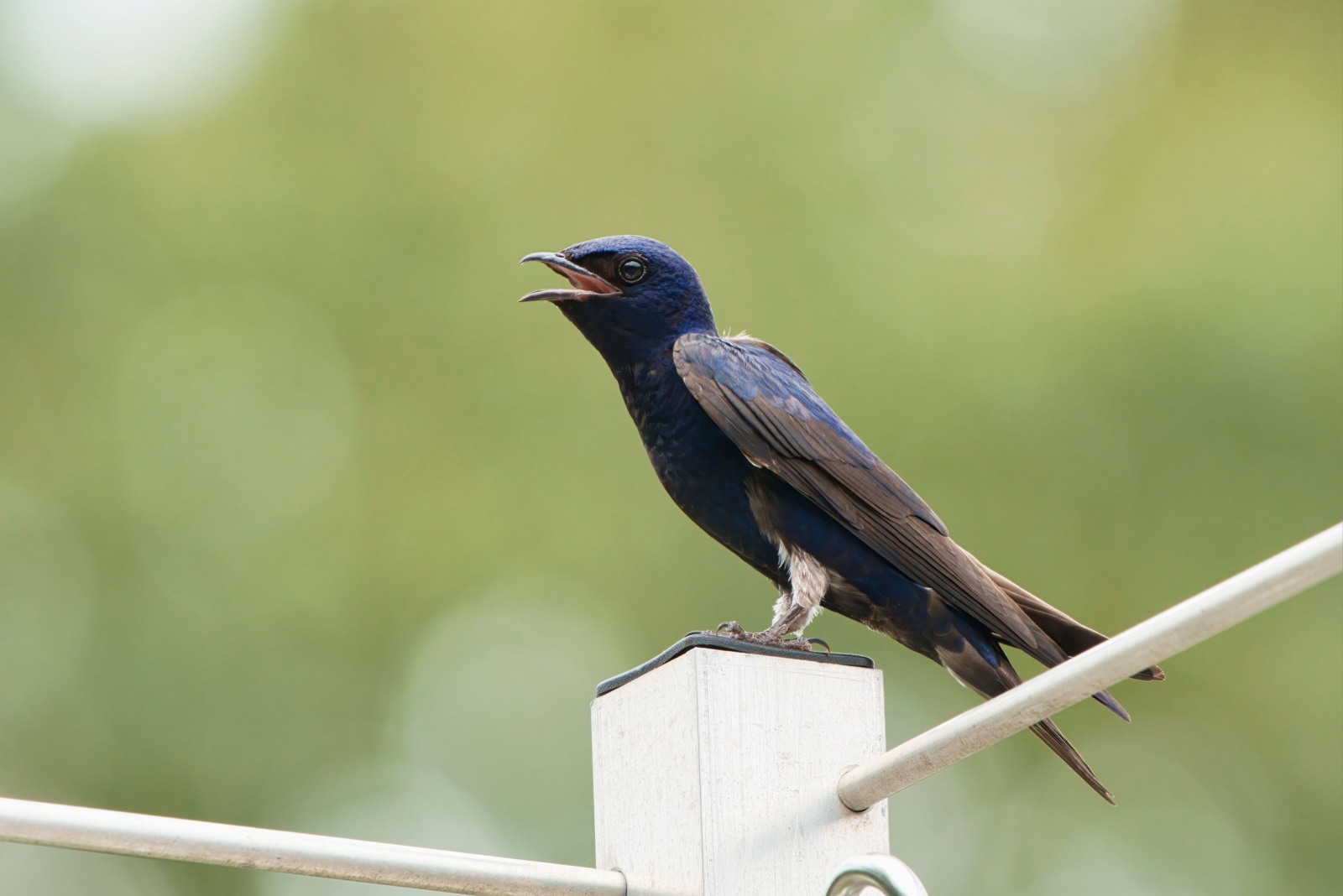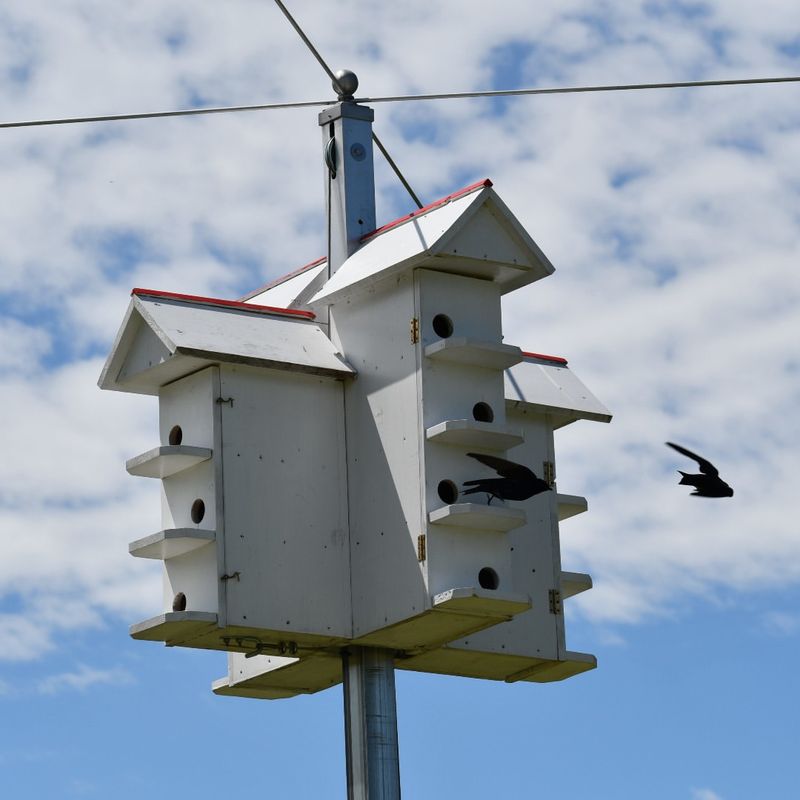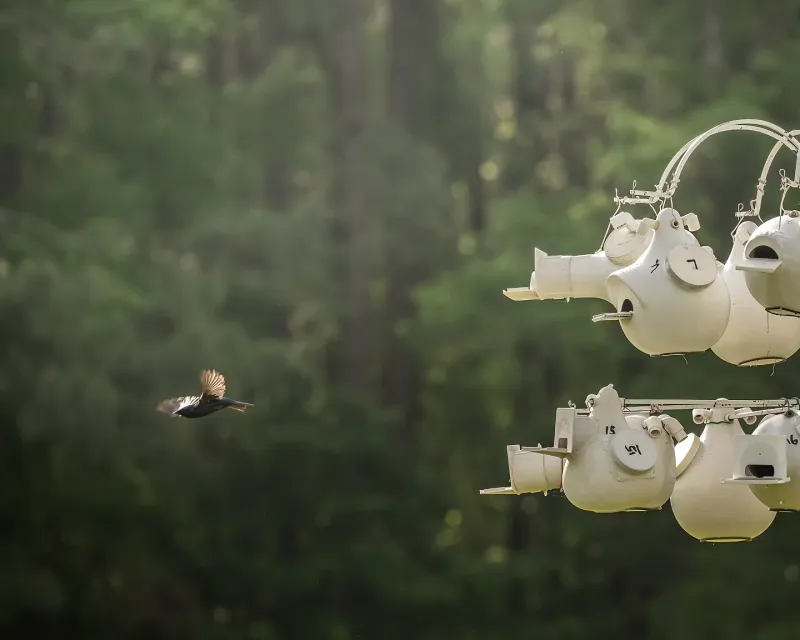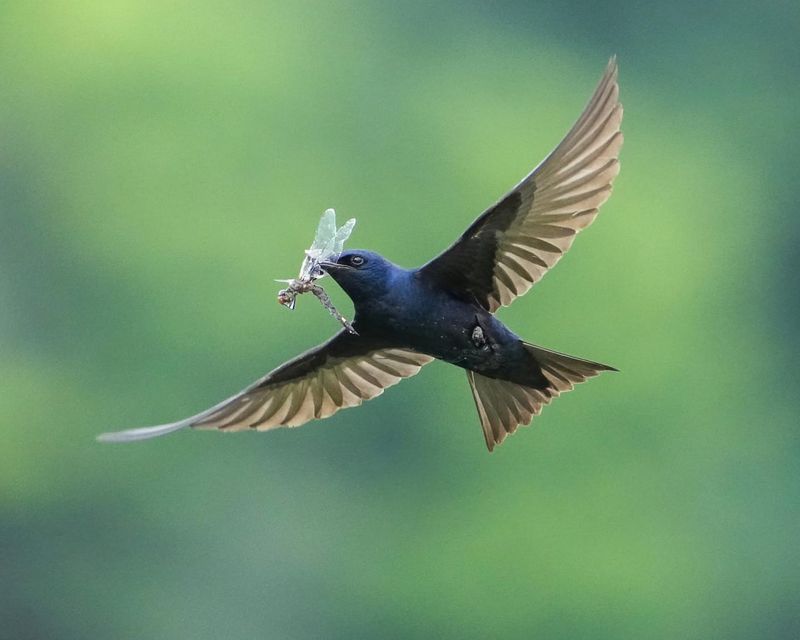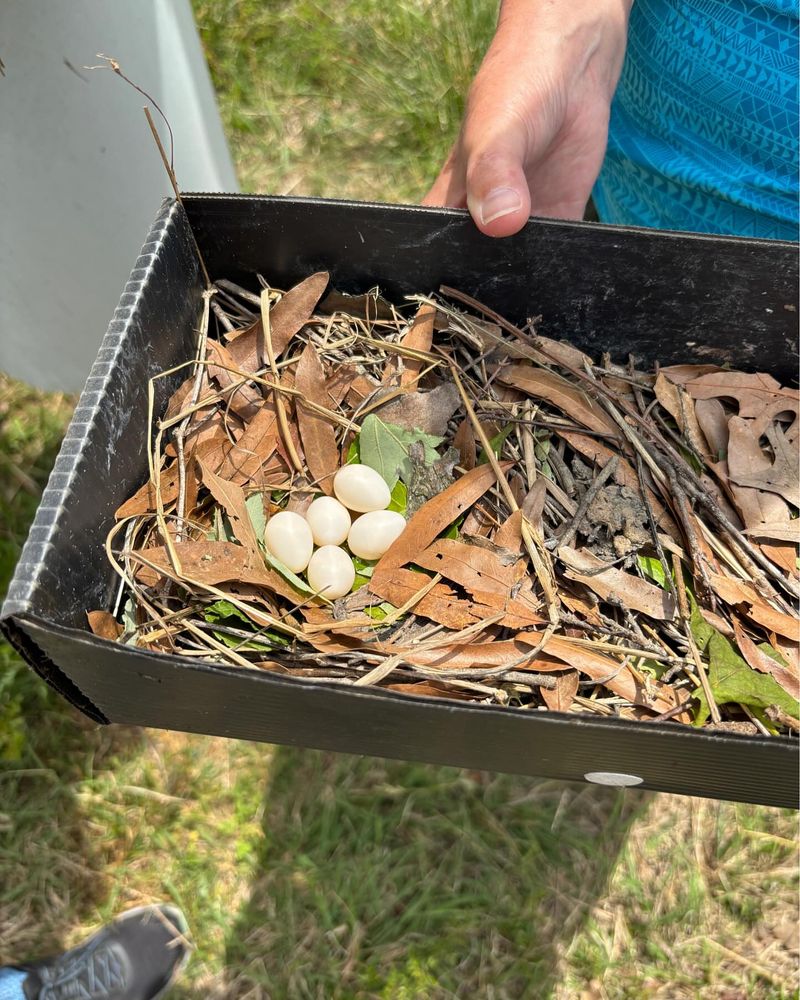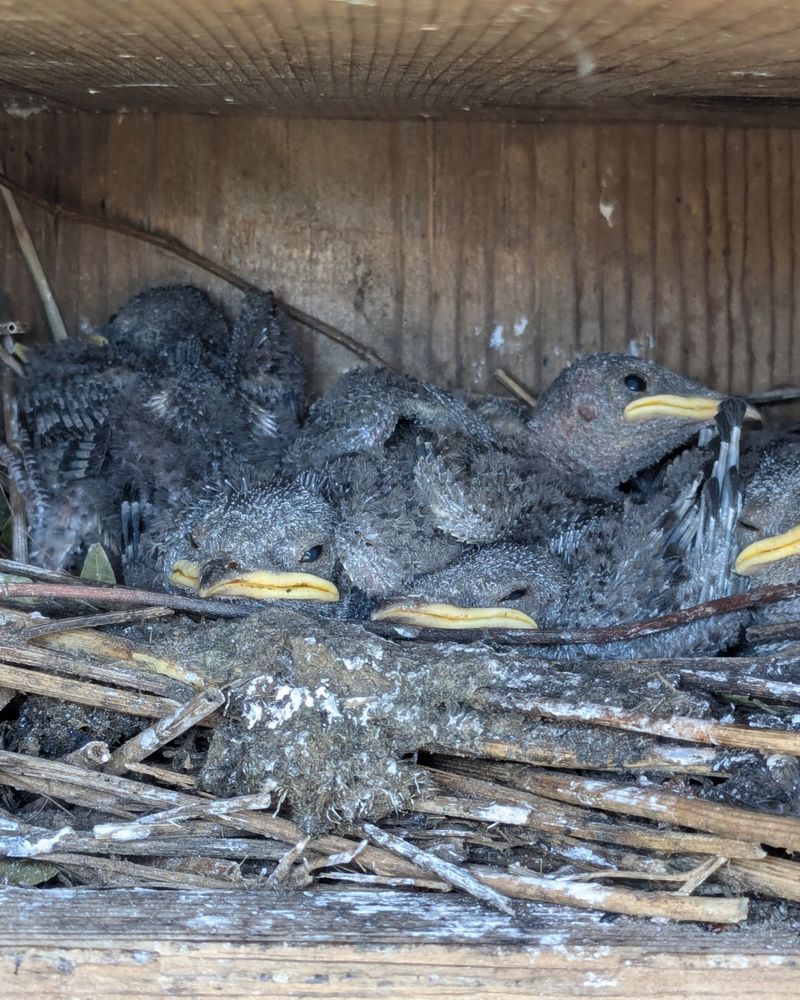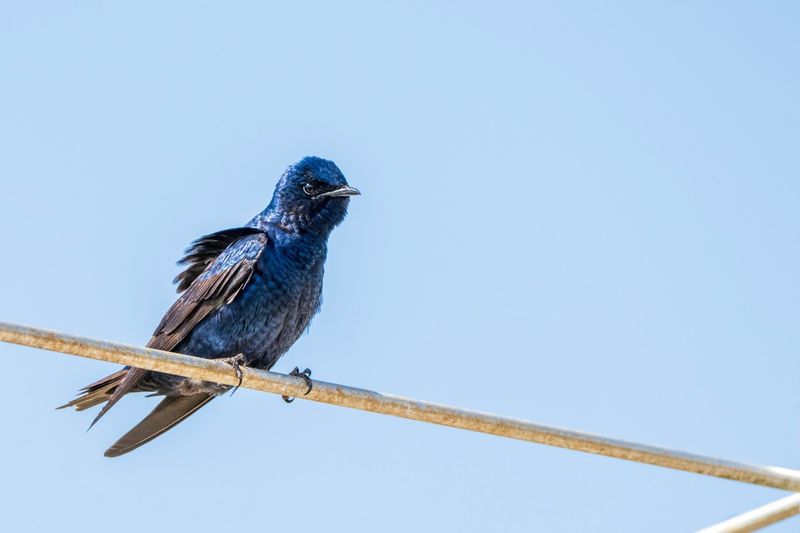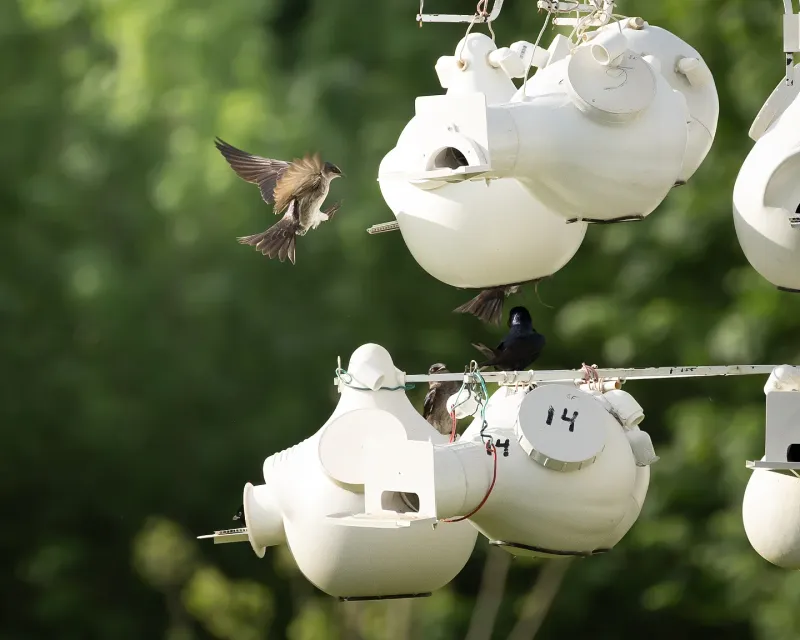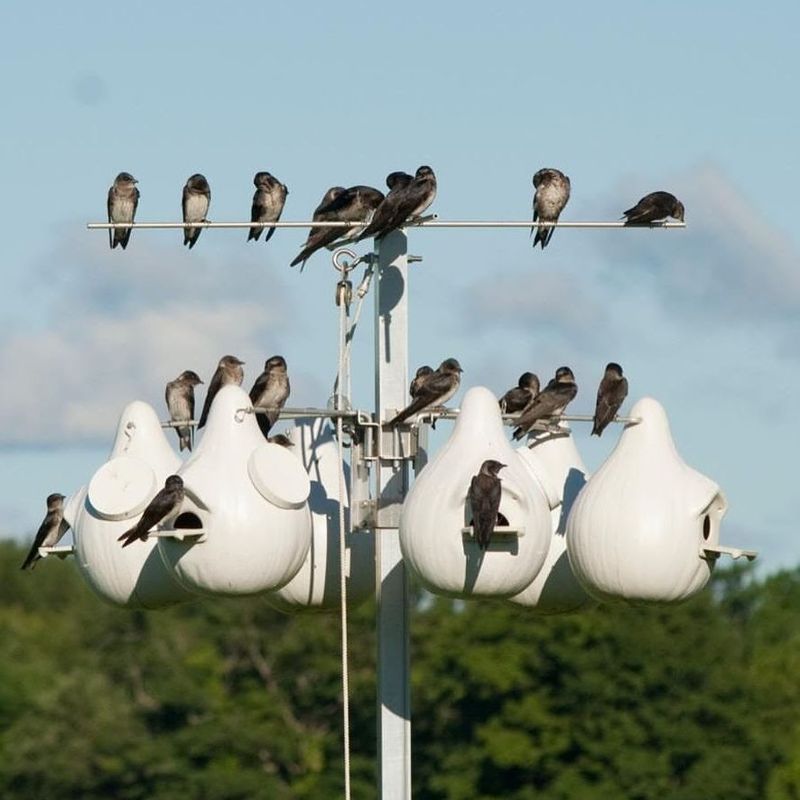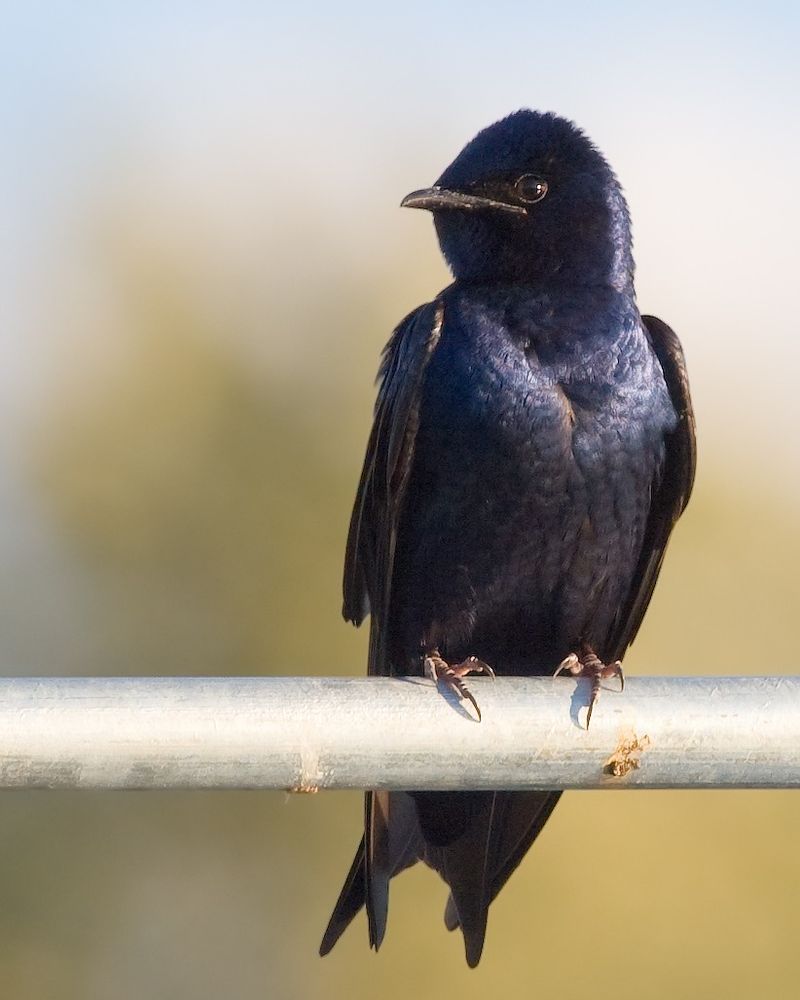Purple Martins are fascinating birds that bring joy and natural pest control to Maryland backyards. These gorgeous aerial acrobats have a special relationship with humans, relying almost entirely on man-made housing east of the Rocky Mountains.
Attracting these beautiful birds might seem challenging, but with the right approach, your yard could become their favorite nesting spot.
1. Install The Right Housing
Success starts with proper housing! Purple Martins in Maryland strongly prefer multi-compartment houses or special gourds designed just for them.
The housing should be mounted 12-20 feet high in open spaces, away from tall trees. Martins need room to swoop in and out without obstacles.
White housing works best as it reflects heat and keeps nestlings cooler during Maryland’s hot summer days.
2. Perfect Your Timing
Timing makes all the difference when attracting Purple Martins. In Maryland, these birds typically return from South America between late March and early April.
Have your houses ready and opened by mid-March to welcome the first scouts. These early birds are usually older males searching for nesting sites.
If you miss this window, don’t worry! You’ll have another chance when younger birds arrive later in spring.
3. Create An Open Landscape
Purple Martins crave wide-open spaces! They hunt insects on the wing and need plenty of flying room around their homes.
Place martin housing at least 40 feet from tall trees and 30 feet from buildings. The ideal spot is often in the center of your largest open yard area.
Martins evolved to nest near water, so properties near lakes, ponds, or streams in Maryland have an extra advantage in attracting these birds.
4. Use Decoys And Calls
Fool passing Martins into thinking your site is already occupied! Plastic Purple Martin decoys attached to your housing signal to flying birds that this is a safe place to land.
Playing recorded Purple Martin dawnsongs through a weatherproof speaker system can also attract attention. The cheerful chirps and warbles act like a dinner bell for house-hunting birds.
Morning hours from sunrise until about 10 AM work best for playing these calls during spring migration.
5. Manage Nest Competitors
European Starlings and House Sparrows frequently try to take over martin housing. These invasive species can be persistent bullies that drive Martins away.
Install special entrance holes called Starling-resistant entrance holes (SREH) that are precisely sized to allow Martins in while keeping larger Starlings out.
Regularly check housing and remove nesting materials from competitors before they become established. In Maryland, this monitoring is crucial in early spring.
6. Provide Nesting Materials
Give your Martins a head start by offering nesting materials they love. Create a “martin mud puddle” by keeping a small area of soil damp near your housing.
Martins use mud to reinforce their nests and will appreciate this thoughtful touch. They also collect dried pine needles, small twigs, and fresh green leaves.
Place these materials in an open area where Martins can safely gather them without fear of predators lurking nearby.
7. Establish A Water Source
Martins love to swoop down and drink on the fly! A birdbath with gently moving water creates an irresistible attraction for these aerial acrobats.
Consider installing a small fountain or water feature in your Maryland yard. The sound of splashing water draws attention while providing both drinking and bathing opportunities.
Keep water sources at least 15 feet from housing but within easy view, allowing Martins to approach safely while watching for predators.
8. Practice Active Management
Successful Martin landlords don’t just install houses and forget them. Regular monitoring throughout the nesting season makes a huge difference in colony success.
Lower your housing weekly to check nest progress, remove parasites, and ensure babies are healthy. In Maryland’s climate, nest checks should happen on calm, warm days to prevent chilling the young.
Keep detailed records of arrival dates, egg-laying, and fledging to improve your techniques each year.
9. Create Predator Protection
Raccoons, snakes, and hawks pose serious threats to Martin colonies in Maryland. Install predator guards on housing poles – metal baffles or stovepipes work wonderfully to prevent climbing predators.
Mount houses in open areas away from trees where flying predators might perch and launch attacks. The ideal location is at least 40 feet from tall perches.
Consider adding owl guards during nesting season, as Great Horned Owls sometimes raid Martin houses at night.
10. Join The Purple Martin Community
Connect with experienced Martin landlords through the Purple Martin Conservation Association or Maryland’s local birding groups. Fellow enthusiasts offer invaluable advice specific to your region.
Attend workshops held throughout Maryland during winter and early spring. These events provide hands-on training for attracting and managing Martin colonies.
Online forums let you troubleshoot problems quickly with help from experts who understand the unique challenges of attracting Martins in the Mid-Atlantic region.

